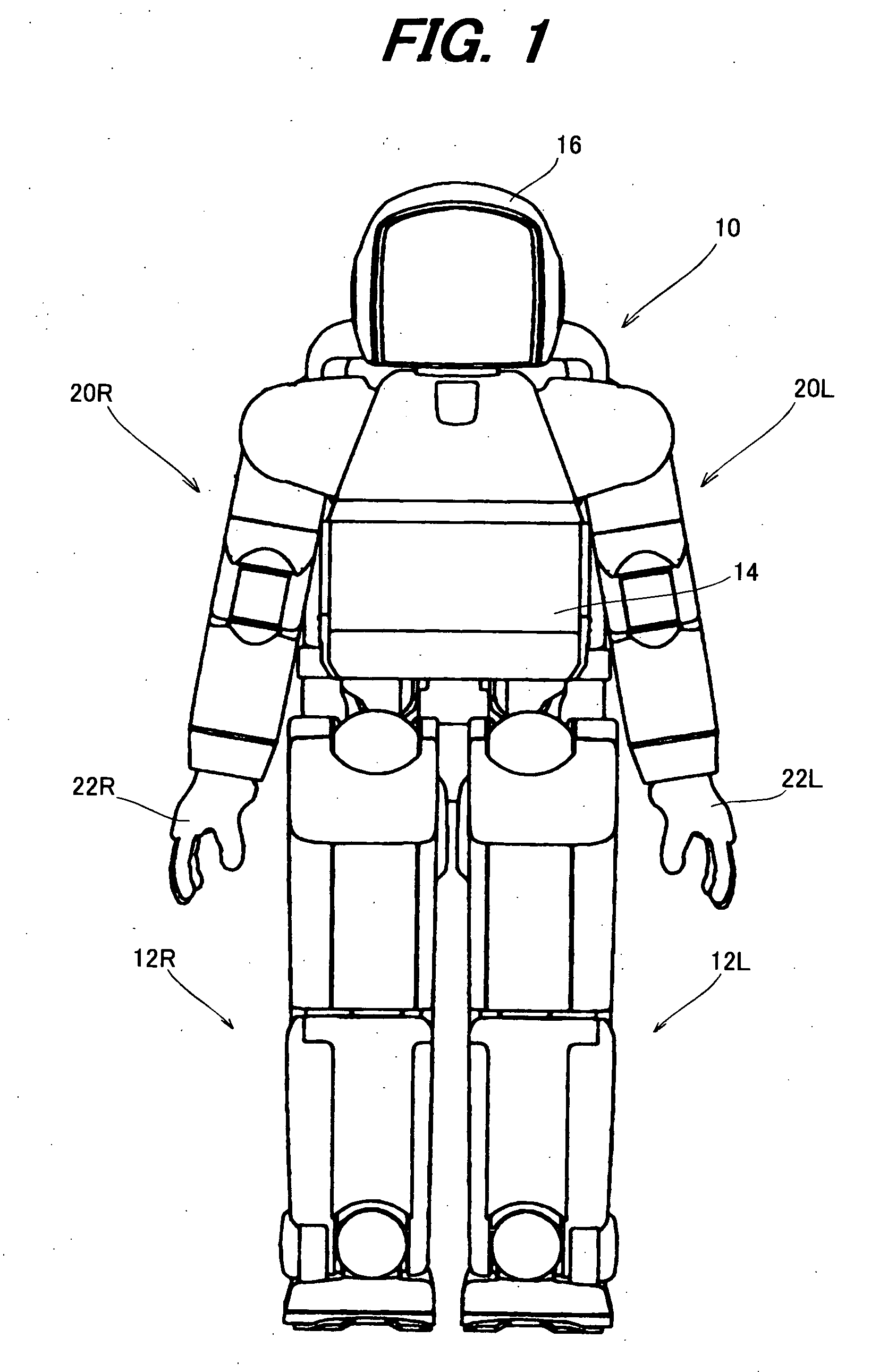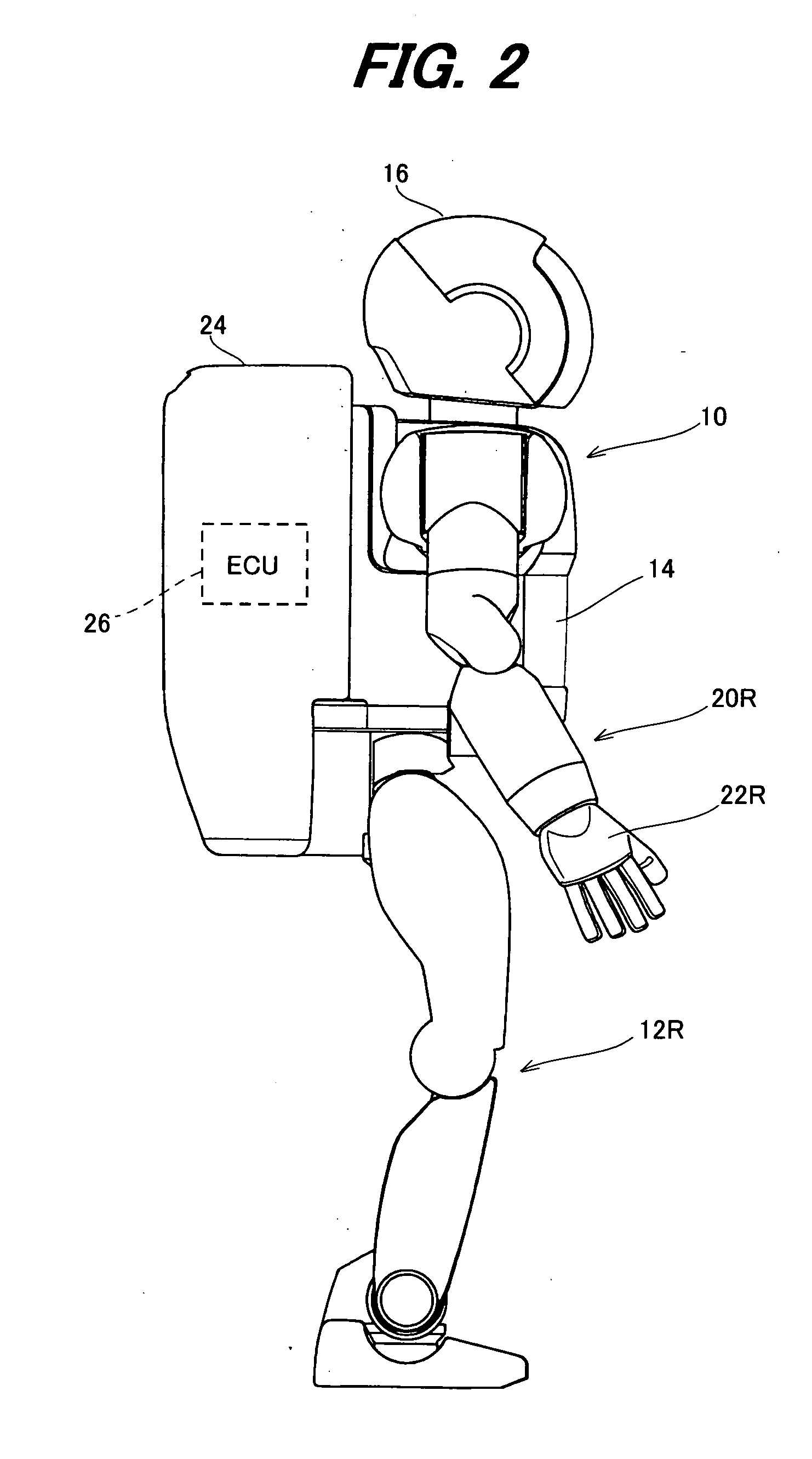Legged mobile robot control system
a mobile robot and control system technology, applied in computer control, program control, instruments, etc., can solve the problems of legged mobile robots losing stability and legged mobile robots being likely to lose stability, and achieve the effect of stable postur
- Summary
- Abstract
- Description
- Claims
- Application Information
AI Technical Summary
Benefits of technology
Problems solved by technology
Method used
Image
Examples
second embodiment
[0080]FIG. 9 is a former half of a flowchart showing the operation of a legged mobile control system according to the invention, and FIG. 10 is a view similar to FIG. 6, but is a latter half of the flowchart of FIG. 9.
[0081] The operation of the second embodiment is to control the robot to walk by taking a partner's hand by the hand 22R or 22L.
[0082] First in S200, the robot 10 is controlled to determine whether conducting a human being is requested. This is done by determining whether an audible instruction to conduct a human being has been inputted by the operator through the voice recognizer 108. The robot 10 may instead be configured to receive any other command or may be configured to have the initial state to perform this task.
[0083] When the result in S200 is negative, the program proceeds to S300 and on mentioned in FIG. 10. The processing mentioned in S300 to S354 in the flowchart of FIG. 10 is quite the same as that mentioned in FIG. 6, in which the robot 10 is controlle...
first embodiment
[0086] Next in S204, the robot 10 is controlled to find the human being, i.e., a partner. Similarly to the first embodiment, this is done from the output of the image processor 110 or the identification signal being transmitted from the IC tag 92 to the IC tag signal receiver 94, or by both of them.
[0087] Next in S206, the robot 10 is controlled to determine whether the partner is found and when the result is affirmative, the robot 10 is controlled in S208 to determine whether it has approached the partner within a predetermined distance (e.g., several meters) and when the result is affirmative, next in S210, it is controlled to move to further approach the person. The processing from S204 to S210 is very similar to S12 to S16 of the flowchart of FIG. 6 in the first embodiment.
[0088] Next, the robot 10 is controlled to determine in S212 whether the height of the partner has been recognized and when the result is affirmative, next in S214, a desired position or height of one of the ...
PUM
 Login to View More
Login to View More Abstract
Description
Claims
Application Information
 Login to View More
Login to View More - R&D
- Intellectual Property
- Life Sciences
- Materials
- Tech Scout
- Unparalleled Data Quality
- Higher Quality Content
- 60% Fewer Hallucinations
Browse by: Latest US Patents, China's latest patents, Technical Efficacy Thesaurus, Application Domain, Technology Topic, Popular Technical Reports.
© 2025 PatSnap. All rights reserved.Legal|Privacy policy|Modern Slavery Act Transparency Statement|Sitemap|About US| Contact US: help@patsnap.com



